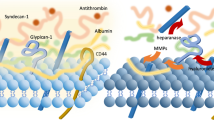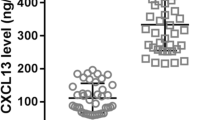Abstract
The preservation of the endothelial glycocalyx (eGC) showed benefits for the treatment of sepsis. The sedative medicine dexmedetomidine (DEX) has been studied to be able to preserve the eGC that has not been shown in sepsis. As recently developed experimental techniques, microfluidics-based in vitro models showed merits in the physiological and pathological study of vascular endothelium and can be applied for the establishment of sepsis-related glycocalyx degradation. This study is based on a PDMS-based microfluidic system to assess the protective role of the DEX treatment in preserving the eGC in sepsis. The PDMS-based microfluidic system was applied to the culture of human umbilical vein endothelial cells (HUVECs). The microfluidic-based endothelial culture was validated and then assessed for the effects of DEX treatment (100 and 500 nM) on the eGC degradation caused by sepsis. The 500 nM DEX treatment had a significantly higher expression of glycocalyx with the fluorescent intensity relative to the control at 1.07, as compared to the LPS treatment (0.82, P < 0.001) and the 100 nM DEX treatment groups (0.93, P < 0.05). The ELISA assay showed that the 500 nM DEX treatment could significantly (P < 0.05) inhibit the concentration of hyaluronan (HA, the biomarker of glycocalyx degradation) (21.48 ng/mL) in the microfluidic fluids as compared to that of LPS group (24.65 ng/mL). Moreover, this group was also effective (P < 0.01) to inhibit the LPS-induced low expression of Ve-cadherin (0.91) with the intensity relative to control at 1. The DEX treatment at 500 nM was proved to be effective for preserving sepsis-related glycocalyx degradation.







Similar content being viewed by others
Data availability
The datasets generated during and/or analyzed during the current study are available from the corresponding author on reasonable request.
References
Ahn S, Choe T-B, Kwon T-J (2003) The gene expression profile of human umbilical vein endothelial cells stimulated with lipopolysaccharide using cDNA microarray analysis. Int J Molecular Med. https://doi.org/10.3892/ijmm.12.2.231
Barker AL, Konopatskaya O, Neal CR, Macpherson JV, Whatmore JL, Winlove CP, Unwin PR, Shore AC (2004) Observation and characterisation of the glycocalyx of viable human endothelial cells using confocal laser scanning microscopy. Phys Chem Chem Phys 6(5):1006–1011. https://doi.org/10.1039/B312189E
Beck GC, Rafat N, Brinkkoetter P, Hanusch C, Schulte J, Haak M, Van Ackern K, Van Der Woude FJ, Yard BA (2006) Heterogeneity in lipopolysaccharide responsiveness of endothelial cells identified by gene expression profiling: role of transcription factors. Clin Exp Immunol 143(3):523–533. https://doi.org/10.1111/j.1365-2249.2006.03005.x
Cao R-N, Tang L, Xia Z-Y, Xia R (2019) Endothelial glycocalyx as a potential theriapeutic target in organ injuries. Chin Med J 132(8):963–975. https://doi.org/10.1097/CM9.0000000000000177
Chai Y, Yu R, Liu Y, Wang S, Yuan D, Chen J (2020) Dexmedetomidine attenuates monocyte-endothelial adherence via inhibiting connexin43 on vascular endothelial cells. Mediators Inflamm 2020:1–10. https://doi.org/10.1155/2020/7039854
Chappel E (2022) Special issue on the development of microfluidic devices for medical applications. Appl Sci 12:8432
Chelazzi C, Villa G, Mancinelli P, De Gaudio AR, Adembri C (2015) Glycocalyx and sepsis-induced alterations in vascular permeability. Crit Care 19(1):26. https://doi.org/10.1186/s13054-015-0741-z
Dewey CF (1984) Effects of fluid flow on living vascular cells. J Biomech Eng 106(1):31–35. https://doi.org/10.1115/1.3138453
Diebel LN, Liberati DM, Martin JV (2019) Acute hyperglycemia increases sepsis related glycocalyx degradation and endothelial cellular injury: a microfluidic study. The Am J Surg 217(6):1076–1082. https://doi.org/10.1016/j.amjsurg.2018.12.066
Dragt BS, van Agtmaal EL, de Laat B, Voorberg J (2012) Effect of laminar shear stress on the distribution of Weibel-Palade bodies in endothelial cells. Thromb Res 130(5):741–745. https://doi.org/10.1016/j.thromres.2012.08.301
Gnatek Y, Zimmerman G, Goll Y, Najami N, Soreq H, Friedman A (2012) Acetylcholinesterase loosens the brain’s cholinergic anti-inflammatory response and promotes epileptogenesis. Front Molecular Neurosci. https://doi.org/10.3389/fnmol.2012.00066
Goligorsky MS, Sun D (2020) Glycocalyx in endotoxemia and sepsis. Am J Pathol 190(4):791–798. https://doi.org/10.1016/j.ajpath.2019.06.017
Goswami DG, Garcia LF, Dodoo C, Dwivedi AK, Zhou Y, Pappas D, Walker WE (2021) Evaluating the timeliness and specificity of CD69, CD64, and CD25 as biomarkers of sepsis in mice. Shock 55(4):507–518. https://doi.org/10.1097/SHK.0000000000001650
Gouverneur M, Berg B, Nieuwdorp M, Stroes E, Vink H (2006) Vasculoprotective properties of the endothelial glycocalyx: effects of fluid shear stress. J Intern Med 259(4):393–400. https://doi.org/10.1111/j.1365-2796.2006.01625.x
Greineder CF, Johnston IH, Villa CH, Gollomp K, Esmon CT, Cines DB, Poncz M, Muzykantov VR (2017) ICAM-1–targeted thrombomodulin mitigates tissue factor–driven inflammatory thrombosis in a human endothelialized microfluidic model. Blood Adv 1(18):1452–1465. https://doi.org/10.1182/bloodadvances.2017007229
Hayashi T, Suzuki K (2015) Changes of expression of the protein C pathway components in LPSInduced endotoxemia-implication for sepsis. Cardiov Hematol Disord-Drug Targets 15(1):2–9. https://doi.org/10.2174/1871529X15666150108110821
Henderson-Toth CE, Jahnsen ED, Jamarani R, Al-Roubaie S, Jones EAV (2012) The glycocalyx is present as soon as blood flow is initiated and is required for normal vascular development. Dev Biol 369(2):330–339. https://doi.org/10.1016/j.ydbio.2012.07.009
Kobayashi K, Mimuro S, Sato T, Kobayashi A, Kawashima S, Makino H, Doi M, Katoh T, Nakajima Y (2018) Dexmedetomidine preserves the endothelial glycocalyx and improves survival in a rat heatstroke model. J Anesth 32(6):880–885. https://doi.org/10.1007/s00540-018-2568-7
Kobayashi A, Mimuro S, Katoh T, Kobayashi K, Sato T, Kien TS, Nakajima Y (2022) Dexmedetomidine suppresses serum syndecan-1 elevation and improves survival in a rat hemorrhagic shock model. Exp Anim 71(3):21–0186. https://doi.org/10.1538/expanim.21-0186
Kong W, Kang K, Gao Y, Liu H, Meng X, Yang S, Yu K, Zhao M (2017) Dexmedetomidine alleviates LPS-induced septic cardiomyopathy via the cholinergic anti-inflammatory pathway in mice. In Am J Transl Res 9(11):5040
Kwon S, Kurmashev A, Lee MS, Kang JH (2020) An inflammatory vascular endothelium-mimicking microfluidic device to enable leukocyte rolling and adhesion for rapid infection diagnosis. Biosens Bioelect 168:112558. https://doi.org/10.1016/j.bios.2020.112558
Li Y-SJ, Haga JH, Chien S (2005) Molecular basis of the effects of shear stress on vascular endothelial cells. J Biomech 38(10):1949–1971. https://doi.org/10.1016/j.jbiomech.2004.09.030
Liu Z, Wang Y, Ning Q, Gong C, Zhang Y, Zhang L, Bu X, Jing G (2015) The role of spleen in the treatment of experimental lipopolysaccharide-induced sepsis with dexmedetomidine. Springerplus 4(1):800. https://doi.org/10.1186/s40064-015-1598-y
Liu J, Shi K, Hong J, Gong F, Mo S, Chen M, Zheng Y, Jiang L, Xu L, Tu Y, Hu B, Yang X, Sun R (2020) Dexmedetomidine protects against acute kidney injury in patients with septic shock. Annals Palliat Med 9(2):224–230. https://doi.org/10.21037/apm.2020.02.08
Martin JV, Liberati DM, Diebel LN (2018) Excess sodium is deleterious on endothelial and glycocalyx barrier function: a microfluidic study. J Trauma Acute Care Surg 85(1):128–134. https://doi.org/10.1097/TA.0000000000001892
Miranda ML, Balarini MM, Bouskela E (2015) Dexmedetomidine attenuates the microcirculatory derangements evoked by experimental sepsis. Anesthesiology 122(3):619–630. https://doi.org/10.1097/ALN.0000000000000491
Moon JJ, Matsumoto M, Patel S, Lee L, Guan J-L, Li S (2005) Role of cell surface heparan sulfate proteoglycans in endothelial cell migration and mechanotransduction. J Cell Physiol 203(1):166–176. https://doi.org/10.1002/jcp.20220
Nam U, Kim S, Park J, Jeon JS (2020) Lipopolysaccharide-induced vascular inflammation model on microfluidic chip. Micromachines 11(8):747. https://doi.org/10.3390/mi11080747
Ohta Y, Miyamoto K, Kawazoe Y, Yamamura H, Morimoto T (2020) Effect of dexmedetomidine on inflammation in patients with sepsis requiring mechanical ventilation: a sub-analysis of a multicenter randomized clinical trial. Crit Care 24(1):493. https://doi.org/10.1186/s13054-020-03207-8
Opal SM, van der Poll T (2015) Endothelial barrier dysfunction in septic shock. J Intern Med 277(3):277–293. https://doi.org/10.1111/joim.12331
Pandharipande PP, Sanders RD, Girard TD, McGrane S, Thompson JL, Shintani AK, Herr DL, Maze M, Ely EW, Investigators MENDS (2010) Effect of dexmedetomidine versus lorazepam on outcome in patients with sepsis: an a priori-designed analysis of the MENDS randomized controlled trial. Crit Care 14(2):R38. https://doi.org/10.1186/cc8916
Prabhakarpandian B, Shen M-C, Pant K, Kiani MF (2011) Microfluidic devices for modeling cell–cell and particle–cell interactions in the microvasculature. Microvasc Res 82(3):210–220. https://doi.org/10.1016/j.mvr.2011.06.013
Ramadan Q, Alberti M, Dufva M, Tung Y-C (2019) Editorial: Medical and Industrial applications of microfluidic-based cell/tissue culture and organs-on-a-chip. Front Bioeng Biotechnol. https://doi.org/10.3389/fbioe.2019.00151
Shemesh J, Jalilian I, Shi A, Heng Yeoh G, Knothe Tate ML, Ebrahimi Warkiani M (2015) Flow-induced stress on adherent cells in microfluidic devices. Lab Chip 15(21):4114–4127. https://doi.org/10.1039/C5LC00633C
Tan J, Shen J, Gong Y, Zhu H, Hu Z, Wu G (2017) Dexmedetomidine ameliorates lipopolysaccharide-induced endothelial barrier disruption and inflammation by inhibiting NF-kappa B activity and activating alpha 2-adrenergic receptor. Int J Clin Exp Med 10(1):532–539
Thi MM, Tarbell JM, Weinbaum S, Spray DC (2004) The role of the glycocalyx in reorganization of the actin cytoskeleton under fluid shear stress: a “bumper-car” model. Proc Natl Acad Sci 101(47):16483–16488. https://doi.org/10.1073/pnas.0407474101
Tsvirkun D, Grichine A, Duperray A, Misbah C, Bureau L (2017) Microvasculature on a chip: study of the endothelial surface layer and the flow structure of red blood cells. Sci Rep 7(1):45036. https://doi.org/10.1038/srep45036
Uchimido R, Schmidt EP, Shapiro NI (2019) The glycocalyx: a novel diagnostic and therapeutic target in sepsis. Crit Care 23(1):16. https://doi.org/10.1186/s13054-018-2292-6
Wu Q, Gao W, Zhou J, He G, Ye J, Fang F, Luo J, Wang M, Xu H, Wang W (2019) Correlation between acute degradation of the endothelial glycocalyx and microcirculation dysfunction during cardiopulmonary bypass in cardiac surgery. Microvasc Res 124:37–42. https://doi.org/10.1016/j.mvr.2019.02.004
Yao Y, Rabodzey A, Dewey CF (2007) Glycocalyx modulates the motility and proliferative response of vascular endothelium to fluid shear stress. Am J Physiol-Heart Circulat Physiol 293(2):H1023–H1030. https://doi.org/10.1152/ajpheart.00162.2007
Yeom E, Kim HM, Park JH, Choi W, Doh J, Lee SJ (2017) Microfluidic system for monitoring temporal variations of hemorheological properties and platelet adhesion in LPS-injected rats. Sci Rep 7(1):1801. https://doi.org/10.1038/s41598-017-01985-w
Yin L, Chen X, Ji H, Gao S (2019) Dexmedetomidine protects against sepsis-associated encephalopathy through Hsp90/AKT signaling. Mol Med Rep 20(5):4731–4740. https://doi.org/10.3892/MMR.2019.10718/ABSTRACT
Zeng Y, Tarbell JM (2014) The adaptive remodeling of endothelial glycocalyx in response to fluid shear stress. PLoS ONE 9(1):e86249. https://doi.org/10.1371/journal.pone.0086249
Zhang X, Huk DJ, Wang Q, Lincoln J, Zhao Y (2014) A microfluidic shear device that accommodates parallel high and low stress zones within the same culturing chamber. Biomicrofluidics 8(5):054106. https://doi.org/10.1063/1.4894783
Zhang Y, Li W, Zhou Y, Johnson A, Venable A, Hassan A, Griswold J, Pappas D (2018) Detection of sepsis in patient blood samples using CD64 expression in a microfluidic cell separation device. Analyst 143(1):241–249. https://doi.org/10.1039/C7AN01471F
Acknowledgements
This study was financially supported by the Fundamental Research Funds for the Central Universities (No. JKF-YG-20-B008 & No. YWF-19-BJ-J-132) and the National Natural Science Foundation of China (No. 11674019 & No. 12072010). Besides, this work was also partially funded by the National Natural Science Foundation of China under Grant No. 82172401.
Funding
This work was supported by the National Natural Science Foundation of China, under Grant No. 82172401, No. 12072010 and No. 11674019, and Fundamental Research Funds for the Central Universities, under Grant No. JKF-YG-20-B008 and No. YWF-19-BJ-J-132.
Author information
Authors and Affiliations
Contributions
All authors contributed to the study conception and design. WL performed the majority of experiments, data collection and analysis, and wrote the manuscript. LY prepared the primary HUVECs, LPS solution, and DEX medicine, and performed the partial experiments and data collections. WH and SY made the contribution to the fabrication of the PDMS-based microfluidic system and the performance of preliminary experiments. YX, PZ, and TW made the contribution to the revision of data analysis and manuscript.
Corresponding authors
Ethics declarations
Conflict of interest
The authors declare that they have no conflict of interest.
Additional information
Publisher's Note
Springer Nature remains neutral with regard to jurisdictional claims in published maps and institutional affiliations.
Supplementary Information
Below is the link to the electronic supplementary material.
Rights and permissions
Springer Nature or its licensor (e.g. a society or other partner) holds exclusive rights to this article under a publishing agreement with the author(s) or other rightsholder(s); author self-archiving of the accepted manuscript version of this article is solely governed by the terms of such publishing agreement and applicable law.
About this article
Cite this article
Liao, W., Yi, L., He, W. et al. A PDMS-based microfluidic system for assessment of the protective role of dexmedetomidine against sepsis-related glycocalyx degradation. Microfluid Nanofluid 27, 29 (2023). https://doi.org/10.1007/s10404-023-02635-6
Received:
Accepted:
Published:
DOI: https://doi.org/10.1007/s10404-023-02635-6




